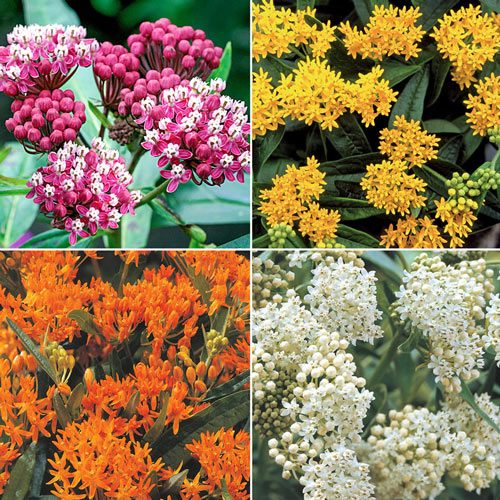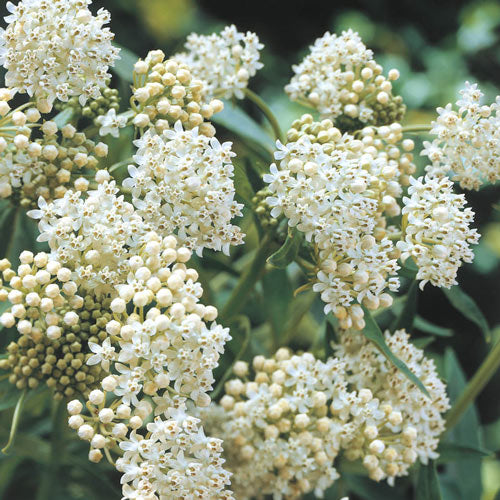Asclepias Collection
Asclepias Collection
Couldn't load pickup availability

Asclepias Collection
Asclepias Is Vital to the Survival of Monarch Butterflies
The U.S. population of the monarch butterfly has drastically fallen in recent years. Scientists say the iconic orangeand- black insects are particularly scarce in Western states, due largely to the destruction of their asclepias habitat by pesticides and herbicides along their migratory route to California. Milkweeds are crucial to the monarch's survival.
The butterflies lay their eggs on them, and the newly hatched larvae feed on the leaves. Because monarch females usually deposit just one egg per plant, their offspring don't harm milkweeds.
Native to North America, asclepias-- more commonly known as milkweed-- provides a steady food source for many pollinators, including beautiful monarch butterflies.
Easily attract butterflies, honeybees and hummingbirds to your landscape with freeflowering, colourful and nectarladen asclepias. Also called milkweed, this herbaceous perennial spreads and multiplies year after year to create longlasting displays. They are an essential source of food for monarch butterflies, which are rapidly disappearing in the U.S.
Deer resistant and drought tolerant, the plant's stout stems yield fragrant clusters of tiny, star-shaped flowers and plenty of thick leaves. Use milkweed to add beauty to butterfly and cottage gardens, prairies and meadows. Flowers and seedpods, which form after the blooms, add colour and substance to dried arrangements.
This collection includes:
Soulmate Yields fragrant, 2" clusters of cherrypink blooms with white centres. Ideal for adding vivacious colour to borders, decorative containers and cutting gardens. Asclepias incarnata
Hello Yellow Its first 2-2½" clusters of golden-yellow flowers for the season arrive in early summer to brighten borders, cutting gardens and containers. Easily grown. Asclepias tuberosa
Orange Glory Flower Bears masses of wonderfully fragrant, bright orange flower heads rich with nectar. Beautifies any garden, border,naturalized planting or bouquet. Asclepias tuberosa
Ice Ballet The mildly scented, small, snow-white flowers it produces are set off by the deep green foliage. After the blooms appear, attractive, 4" seedpods form. Asclepias incarnata
- Botanical Name: Asclepias tuberosa
- Form: Perennial
- Hardiness Zone: 3-9
- Flowering Time: Summer time
- Light Requirements: Full Sun
- Flower Color: Collection, see individual varieties
- Flower Form: Milkweed-like blossoms. Flowers about 1/2 cm across in short umbel-like cymes or clusters.
- Foliage Type: Alternate, lanceolate or oblong, 2-6" long and 0.25 to 0.75" wide.
- Growth Rate: Medium
- Height/Habit: 16 - 48 inches
- Spread: 18 - 30 inches
- Planting Instructions: Top of plant should be just below the soil and 18-30" apart
- Soil Requirements: Well drained
- Will Tolerate: Acidic Soil, Clay Soil, Dry Soil, Loamy Soil, Sandy Soil
- Pruning: Remove spent blooms can prolong blooming time.











